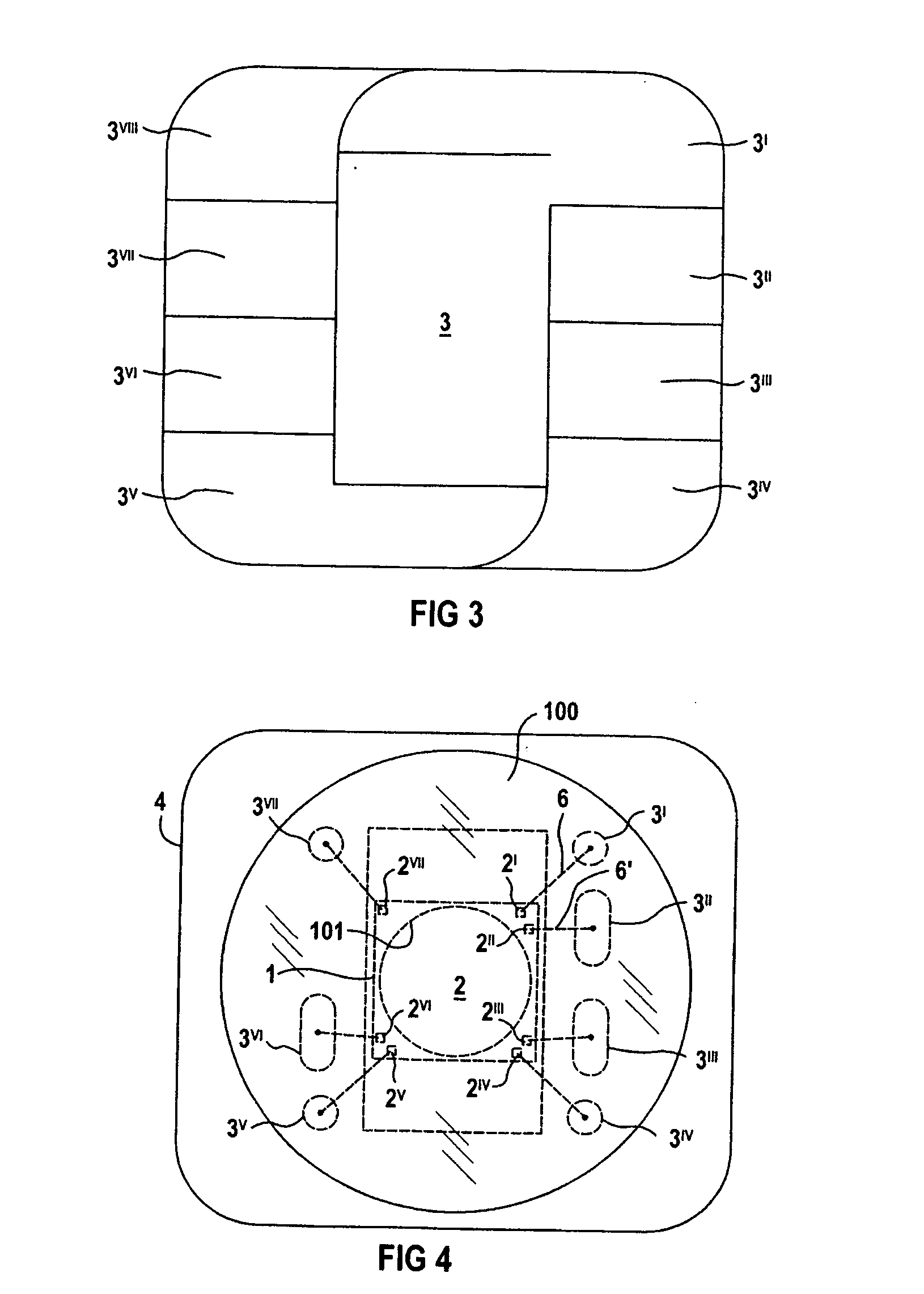Module for an analysis device, applicator as an exchange part of the analysis device and analysis device associated therewith
a module and analysis device technology, applied in the field of modules for analysis devices, can solve the problems of large waste of valuable si chip area, difficult to reliably separate electrical contact from fluidics, and most chemical-biological developments that have not reached the laboratory trial stage, etc., and achieve the effect of efficient heat transfer and very rapid setting
- Summary
- Abstract
- Description
- Claims
- Application Information
AI Technical Summary
Benefits of technology
Problems solved by technology
Method used
Image
Examples
Embodiment Construction
[0029] Reference will now be made in detail to the preferred embodiments of the present invention, examples of which are illustrated in the accompanying drawings, wherein like reference numerals refer to like elements throughout.
[0030] The drawings, in particular FIGS. 1 and 2, are partly described together.
[0031] Chip card technology is a known, widespread and extremely low-cost housing concept in microelectronics. In this case, a microsilicon chip, which has previously being ground thin to about 180 μm at wafer level, is adhesively attached to a carrier strip, which may be a gold-coated, pre-punched copper strip and is possibly reinforced with a strip of plastic. After standard wire bonding, the chip together with the wires is encapsulated in a polymer. A commercially obtainable standard plastic card (materials: PVC, PET, PC; dimensions: about 85×54×0.8 mm3) is milled out at a defined location to module size (about 13×12×0.4 mm3) for receiving the chip carrier module, so that on...
PUM
| Property | Measurement | Unit |
|---|---|---|
| thickness | aaaaa | aaaaa |
| thickness | aaaaa | aaaaa |
| thicknesses | aaaaa | aaaaa |
Abstract
Description
Claims
Application Information
 Login to View More
Login to View More - R&D
- Intellectual Property
- Life Sciences
- Materials
- Tech Scout
- Unparalleled Data Quality
- Higher Quality Content
- 60% Fewer Hallucinations
Browse by: Latest US Patents, China's latest patents, Technical Efficacy Thesaurus, Application Domain, Technology Topic, Popular Technical Reports.
© 2025 PatSnap. All rights reserved.Legal|Privacy policy|Modern Slavery Act Transparency Statement|Sitemap|About US| Contact US: help@patsnap.com



